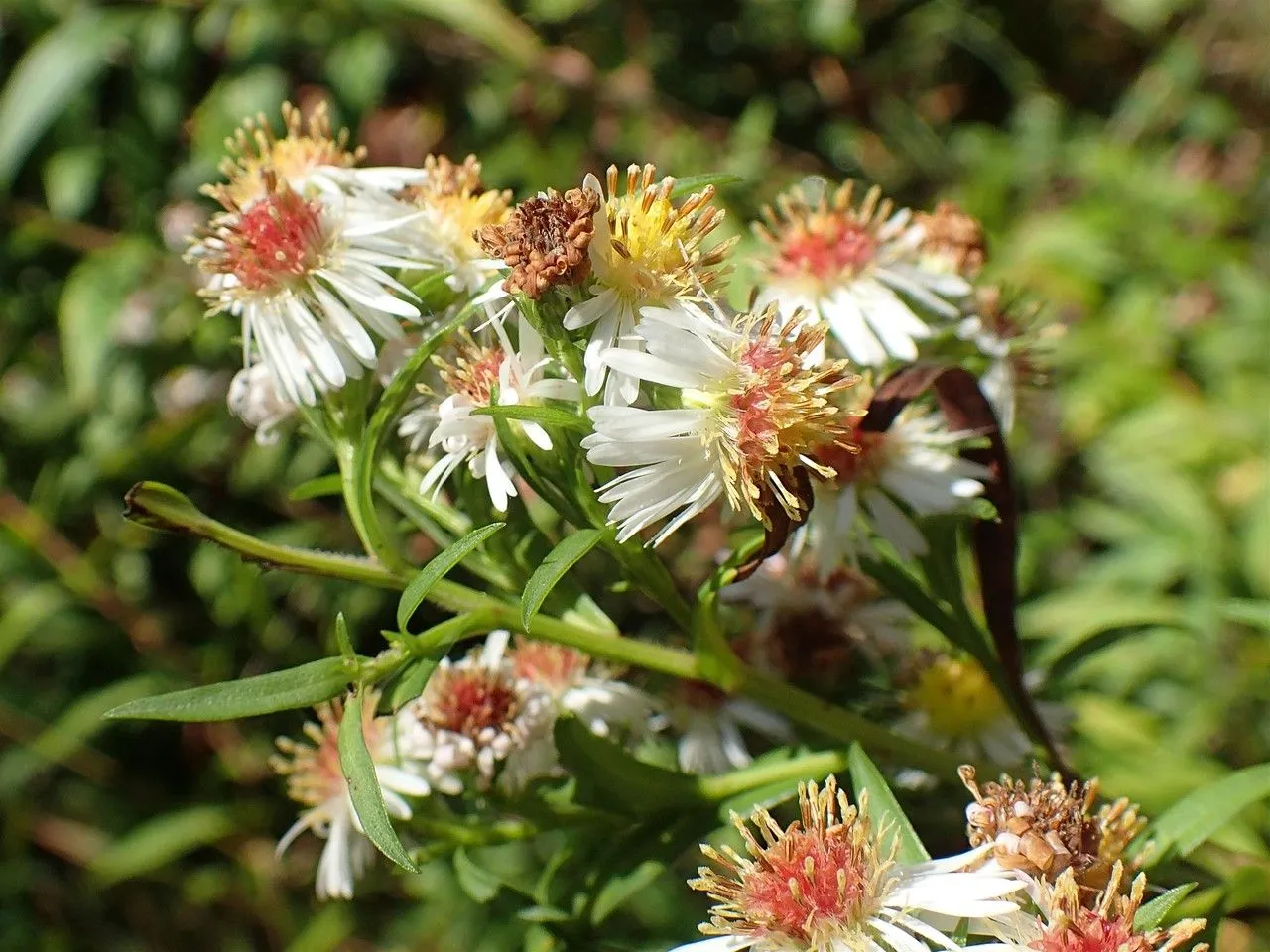
Author: (Willd.) G.L.Nesom
Bibliography: Phytologia 77(3): 295 (1995)
Year: 1995
Status: accepted
Rank: hybrid
Genus: Symphyotrichum
Vegetable: False
Observations: NC. U.S.A.
The Common Michaelmas Daisy, scientifically named Symphyotrichum × salignum, is a noteworthy species within the diverse and abundant Asteraceae family. This plant species, originally classified by the botanist Willdenow and later revised by G.L. Nesom in 1995 as documented in Phytologia, holds a prominent place in the world of flowering plants.
Characterized by its vibrant display of flowers, the Common Michaelmas Daisy typically blooms in late summer through autumn, presenting a spectacular array of hues ranging from purple and pink to white. These blossoms are not only visually appealing but also play a vital ecological role by attracting pollinators like bees and butterflies, thus contributing to the health of their ecosystems.
This species thrives in a variety of habitats, showcasing its adaptive nature. Its resilience allows it to grow in both wild and cultivated environments, making it a favored choice among gardeners and horticulturists. The plant’s ability to withstand different climate conditions, particularly in North Carolina, U.S.A., demonstrates its robustness and wide-ranging adaptability.
The foliage of the Common Michaelmas Daisy consists of narrow, lance-shaped leaves that add to the plant’s ornamental allure. Together with its contrasting stem structure, these leaves create a visually striking effect that enhances its floral appearance.
In landscaping, Symphyotrichum × salignum is appreciated for its ability to provide continuous color late in the gardening season. Its ease of maintenance and compatibility with mixed borders and cottage gardens make it a versatile addition to various garden designs.
In summary, the Common Michaelmas Daisy is a perennial plant that brings both beauty and ecological benefits to any landscape it inhabits. Its historical classification and enduring popularity highlight its significance within the Asteraceae family and its valued presence in multiple environments.
En: Common Michaelmas daisy
Da: Pilebladet asters
De: Weidenblatt-Herbstaster
Sv: Videaster, Pilbladig aster
: Common michaelmas daisy
Taken Oct 16, 2016 by Yoan MARTIN (cc-by-sa)
Taken Oct 16, 2016 by Yoan MARTIN (cc-by-sa)
Taken Oct 16, 2016 by Yoan MARTIN (cc-by-sa)
Taken Oct 16, 2016 by Yoan MARTIN (cc-by-sa)
Taken Oct 16, 2016 by Yoan MARTIN (cc-by-sa)
© copyright of the Board of Trustees of the Royal Botanic Gardens, Kew.
© copyright of the Board of Trustees of the Royal Botanic Gardens, Kew.
© copyright of the Board of Trustees of the Royal Botanic Gardens, Kew.
Taken Oct 16, 2016 by Yoan MARTIN (cc-by-sa)
Taken Oct 16, 2016 by Yoan MARTIN (cc-by-sa)
Taken Oct 16, 2016 by Yoan MARTIN (cc-by-sa)
Taken Oct 16, 2016 by Yoan MARTIN (cc-by-sa)
Taken Nov 8, 2020 by Thomas Andreef (cc-by-sa)
Taken Jul 8, 2022 by Angel Arteaga (cc-by-sa)
Taken Oct 16, 2016 by Yoan MARTIN (cc-by-sa)
Taken Oct 16, 2016 by Yoan MARTIN (cc-by-sa)
Taken Oct 11, 2019 by Nicolas Bazin (cc-by-sa)
Taken Oct 16, 2016 by Yoan MARTIN (cc-by-sa)
Family: Myrtaceae Author: (F.Muell.) K.D.Hill & L.A.S.Johnson Bibliography: Telopea 6: 402 (1995) Year: 1995 Status:…
Family: Rubiaceae Author: Pierre ex A.Froehner Bibliography: Notizbl. Bot. Gart. Berlin-Dahlem 1: 237 (1897) Year:…
Family: Sapindaceae Author: Koidz. Bibliography: J. Coll. Sci. Imp. Univ. Tokyo 32(1): 38 (1911) Year:…
Family: Asteraceae Author: A.Gray Bibliography: Pacif. Railr. Rep.: 107 (1857) Year: 1857 Status: accepted Rank:…
Family: Fabaceae Author: Medik. Bibliography: Vorles. Churpfälz. Phys.-Ökon. Ges. 2: 398 (1787) Year: 1787 Status:…
Family: Aspleniaceae Author: (Cav.) Alston Bibliography: Bull. Misc. Inform. Kew 1932: 309 (1932) Year: 1932…